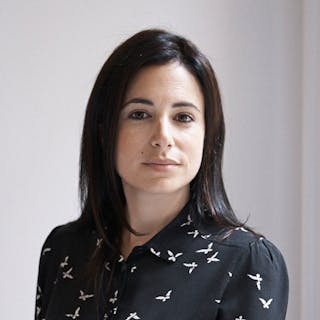As DE&I initiatives grow, should specialist multicultural agencies still exist?
As brands and marketers push to improve targeting and engage diverse audiences, do we need multicultural strategists and planners embedded within 'mainstream' agencies to help drive fully integrated marketing and communications? The Drum speaks to multicultural agency Identity Communications about its future as DE&I initiatives continue to gather momentum.

p
Earlier this year, UM’s multicultural agency Identity Communications hired its first multicultural strategy director. Santosh Murthy joined the agency bringing a wealth of experience in diverse audiences, in particular the CALD and First Nations media space gained from his previous role as general manager at Spots & Space.
Working alongside business director Kimberly Stafford, who joins from UM bringing 15 years of media experience, Murthy and Stafford will co-lead the multicultural agency.
The pairing and the new structure are a reflection of the growing momentum around multicultural marketing in Australia as the push to create more diversity and inclusion grows stronger.
Australia's recent census results revealed that more than half of the country's population are first or second-generation migrants, and 1 in 5 people speak a language other than English at home.
These statistics have helped shine a light on a huge opportunity being overlooked by marketers who are not optimising their marketing - or in most cases even engaging diverse communities.
However, against this backdrop, as marketers and brands look to improve diversity, inclusion and representation, and speak to all Australians, do we still need specialist agencies?
"The reason why we still exist as a specialist agency is because the media that we work with is very different to general population media. There are different skill sets required to engage that media, and there are a lot of nuances involved," says Murthy.
"We work in the realms of what is possible and not in the realms of robust data-driven media, that mainstream general population media is used to. So while there is some value to having a specialist as part of an integrated effort within an organisation or an agency, I would argue the value of having a specialist who can drive those insights, who can go out and have those conversations which sit quite separate to general population media provides the advantage of having a specialist agency.
"I think this should still be integrated within a strategy and working closely with the media agency, so we're involved in everything as early on in the process as possible. The value we deliver is from the fact that we are a specialist."
Murthy points to the many challenges for marketers looking to embrace diverse audiences, such as different measurements, a lack of robust data, and the marketers own organisational structures which may still have siloed multicultural experts or in-house departments.
Advertisement
The impact of cancel culture
A significant hurdle for risk averse brand is fear, says Murthy. Marketers are concerned about causing offence or doing something wrong, which only reinforces the need for specialist partners, adds Murthy.
"I think that there's a fear of making a misstep, or saying the wrong thing, or the risk aversion of engaging with everyone, or why engage that particular diverse group and not others? why not do all? how do you choose? And that's, again, why having a specialist agency that has the knowledge and can do the research to ensure you don't make that misstep. Because one person integrated within an organization is not going to be across all of the nuances and knowledge bases."
Plus, adds Stafford, as the market slows down and marketing budgets face increased scrutiny, there is a greater need for specialist agencies to help reinforce the need for multicultural marketing.
"What we're seeing in the market in general with discretionary spend really being scrutinised, us finding ways that we can show the effectiveness and efficiencies that these investments actually provide on top of their mainstream spends, which have all that robust data already there, is imperative to drive even further growth in diverse marketing," says Stafford.
Advertisement
A surge in awareness & intention
The lack of robust data is a significant challenge that reflects the speed of growth and change within this area. However, the current momentum which is being driven off the back of the last census results has helped throw a spotlight on the importance of diversity and inclusion within marketing and media plans.
Murthy says the upcoming referendum will also help shine a light on the role of diverse media operators as brands and organisations focus on First Nation audiences, however, he says it's important for brands to do more.
Suggested newsletters for you
There is certainly an awareness and intention to do more, however, how that translates it's a whole different conversation. There's a general lack of knowledge of what First Nations media exists and how to engage those media beyond NITV."
"NITV is great but there's a significant amount of First Nations media partners out there that we utilise when we work with government messaging.
"In terms of a commercial or corporate brand, we haven't seen that much talking to all Australians across Australia, yet. But that's not to say that won't change as there is certainly an intention and awareness for it. However, with budgets under scrutiny the question is if you are going to look at a diverse audience, where do you start?"
"However, in terms of how organizations are being more acknowledging of First Nation Australians and the cultural significance of that, has certainly increased over time but in terms of how it plays out in media, I haven't seen that happen yet," adds Murthy.
Helping brands understand why
While some brands are leading the market in engaging diverse audiences and showcasing inclusion, others have a lot of work to do, says Stafford.
"Lion is an example of a brand that is living and breathing their mantra of how they want to operate, and you're seeing that come to market with their recent Pride campaign. that they've just done. I think there are other brands that probably still have a little ways to go.
"I do think we will start to see more momentum in this space. And more and more brands jump on top of it as they start to understand it better. I think that comes back to why you need specialists and experts to provide that value to brands to help understand why it's so important to speak to these communities in the right way. Our job is to think about how we can unlock those nuances to ensure brands are finding the best ways to be culturally relevant to all Australians," says Stafford.

